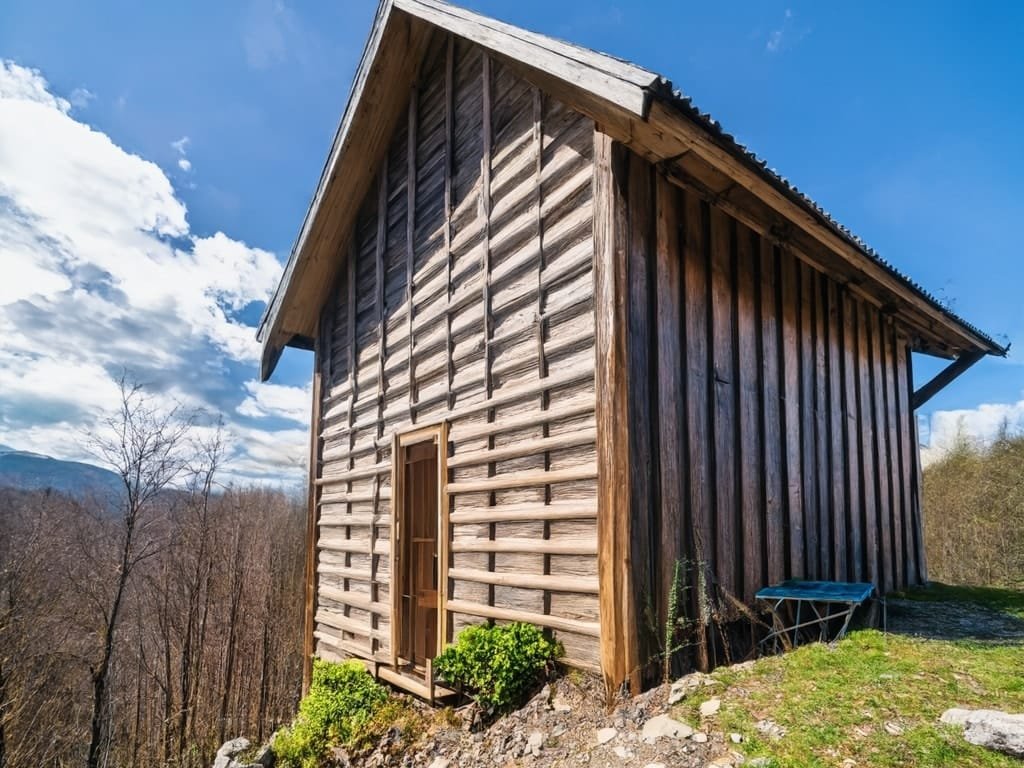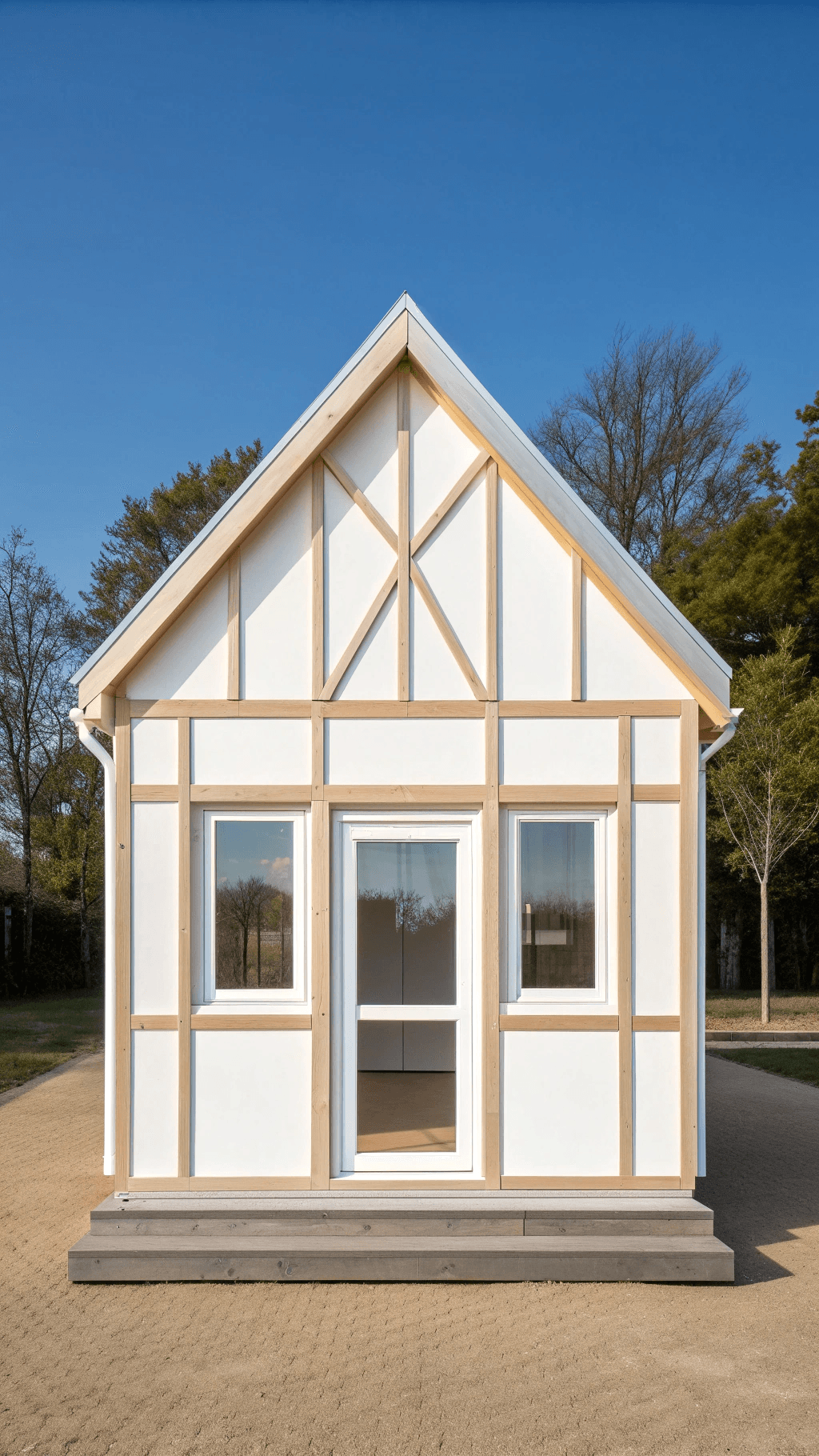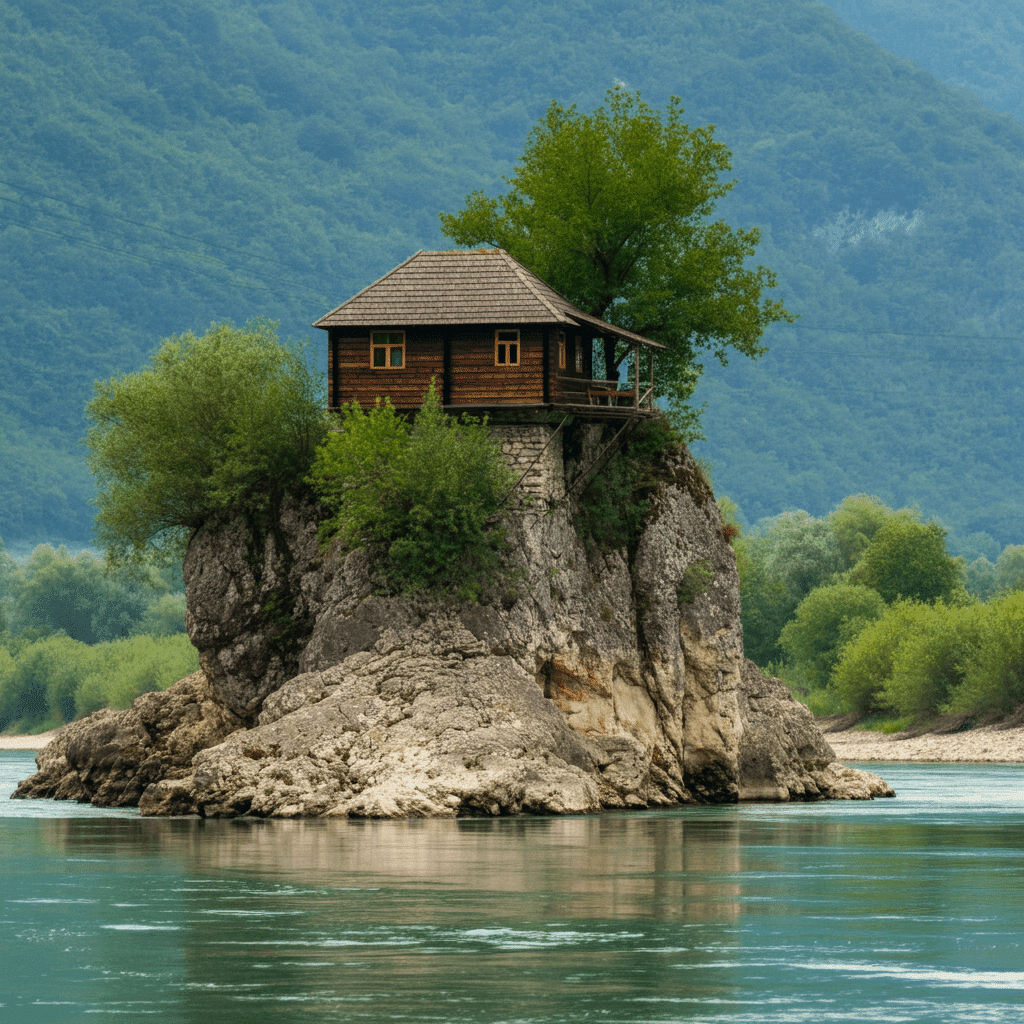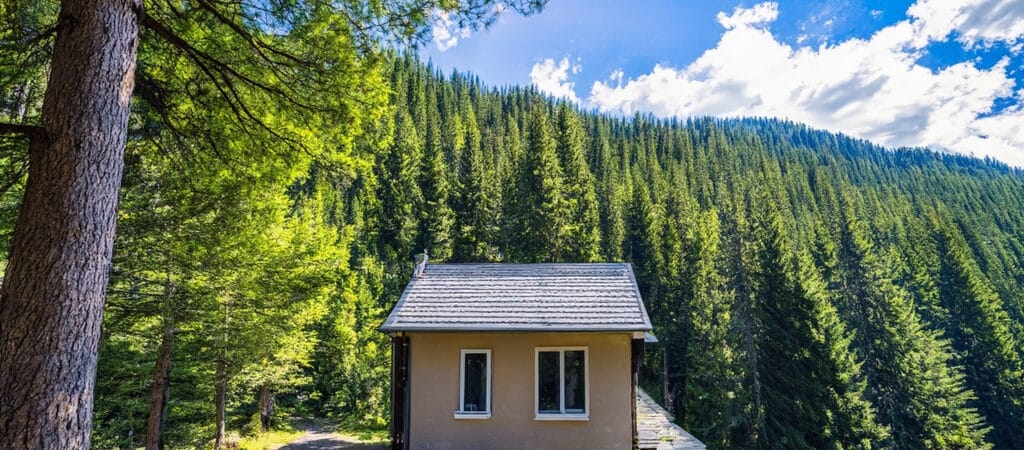What would it be like to live in the smallest tiny home? Could you live in a space designed for just a few essentials? Tiny living spaces are fascinating, full of creativity and practicality. The smallest house concepts push boundaries in terms of design and function. They teach us to rethink how much room we really need.
From mobile tiny homes to the most compact structures in the world, these houses prove less can be more. Some are clever retreats, while others are bold statements about housing and lifestyle. Let’s explore the smallest house ideas and see how they reinvent the way people live.
What is the World’s Smallest House?
The world’s smallest house is just one square meter. Yes, you read that right—only one square meter. It is a creative work by architect Van Bo Le-Mentzel.
The house is lightweight and portable. You can carry it and set it up in new places easily.
This one-square-meter house challenges today’s real estate norms. It asks, “What do we really need in a home?”
The design is minimal but functional. It can stand upright or flatten out into a sleeping space. A sliding window adds light, while a lockable door provides security.
This tiny house sends a powerful message. It’s bold, smart, and redefines what home means.
Tiny Houses Around the World
MuMa Hut, Romania
The MuMa Hut is nestled in the Old Village of Armenia, Romania. Volunteers built this little gem in an orchard.
It’s made to blend with nature using simple, local materials. The highlight? A massive window with a view of the forest.
Inside, it’s tight but cozy. The bed takes up most of the floor area, while a small desk doubles as a workspace.
This hut is a model for efficient, nature-inspired design.

Seelenkiste – Germany
Seelenkiste means “soul box” in German. This eight-square-meter house is a minimalist retreat.
It was designed by three architecture students. They imagined a tiny house for people to reconnect with nature.
The house uses natural wood for a warm, open feel and features large windows to allow plenty of natural light inside. It’s mobile and can be moved to any area.
Whether you’re in a forest or mountains, this house fits perfectly. It’s compact, movable, and full of charm.

House on a Rock – Serbia
The House on a Rock stands proudly on the Drina River within Tara National Park. It’s been there for over 50 years.
This mini home was built by swimmers looking for shelter. The house has been rebuilt multiple times due to weather damage.
The wooden structure sits right on a rocky perch in the water. It blends adventure with functionality.
The Drina River house is now a famous landmark in Serbia. Visitors love taking pictures of this unique, tiny piece of architecture.

Designing Tiny Houses
Tumbleweed Tiny Homes
Tumbleweed Tiny Homes are a popular option. They offer mobile, customizable homes ranging from 217 square feet and up, with some featuring a twin-size bed located on the ground floor to maximize space.
Their smallest home is 225 square feet. It includes all the basics—bedroom, living space, and a bathroom.
You can choose from different layouts and styles. The Elm model, their first design from 1999, remains a favorite.
Tumbleweed shows that small doesn’t mean sacrificing comfort. Every inch is thoughtfully planned to serve a purpose.
Ursa Tiny House on Wheels
The Ursa Tiny House, by Madeiguincho, is all about design. This 17.5-square-meter home is customizable and stylish.
It’s built for life on the move. You can take it off-grid and live in various locations with a wind turbine supporting energy independence.
With six months of construction time, the wait is worth it. It’s a beautiful blend of modern style and functional space-saving. The Ursa shows how small homes can still feel luxurious.
The Benefits of Tiny House Living
Why choose to live in a tiny house? There are plenty of benefits, big and small.
Cost saving: Tiny homes are more affordable than traditional houses.
Energy efficiency: Smaller spaces mean less heating, cooling, and electricity.
Eco-friendly living: These homes use fewer resources and create less waste.
Simple lifestyle: With less space, you keep only what matters.
Tiny homes teach us to value essentials. They also encourage creative storage and multipurpose furniture in the sleeping quarters, such as a Murphy bed, to optimize the limited area available in the compact dwelling.
Imagine living with less clutter and lower bills. That’s the beauty of downsizing.
The Smallest of Them All: Only One Square Meter
The world’s smallest house measures only one square meter. It adapts easily—stand it up for sitting or lay it flat for sleeping, much like the keret house, which is known as the narrowest house in the world, measuring only 1.22 meters at its widest point.
Its portability is a highlight. With wheels on the base, you can roll it to a new location.
The design is smart and compact. It includes a sliding window and a secure door.
This house challenges how we think about living spaces. Could something this tiny count as a “home”? Van Bo Le-Mentzel’s design proves that living small is possible.
The Cultural Impact of Tiny Houses
The tiny house movement has reshaped our understanding of what it means to call a place “home.” Traditionally, the American Dream has been synonymous with sprawling suburban houses and white picket fences. However, tiny houses challenge this notion, offering a more sustainable and minimalist lifestyle that resonates particularly with younger generations and eco-conscious individuals.
Tiny houses symbolize freedom and independence. They allow people to break free from the financial burdens of traditional home ownership, such as hefty mortgages and high maintenance costs. This newfound freedom is not just financial but also geographical, as many tiny homes are mobile, enabling a nomadic lifestyle that appeals to the adventurous spirit.
The cultural impact of tiny houses extends beyond individual lifestyle choices. They are increasingly being seen as viable solutions to pressing social and economic issues, such as homelessness and the lack of affordable housing. Various organizations are leveraging tiny houses to provide temporary or permanent shelter for those in need. Some cities are even incorporating tiny houses into their urban planning strategies, recognizing their potential to address housing shortages in a sustainable way.
Moreover, the tiny house movement has sparked a wave of creativity and innovation in architecture and design. These homes are often marvels of efficiency, utilizing every square meter to its fullest potential. This has led to the development of new building techniques and materials, inspiring architects and designers to think outside the box. The result is a new generation of homes that are not only functional but also aesthetically pleasing and environmentally friendly.
In essence, tiny houses are more than just a trend; they are a cultural phenomenon that challenges us to rethink our living spaces and our lifestyles. They remind us that a home is not defined by its size but by its design, purpose, and the sense of freedom it provides.
The Future of Tiny Houses
What’s next for tiny homes? The future looks exciting for these compact living spaces.
Here are some key trends in tiny house innovation:
Smart features: Homes with built-in tech for energy efficiency.
Eco-focus: Designs with zero-energy use or renewable materials.
Versatility: Houses that can change layouts or expand when needed.
Countries like Australia are pushing boundaries. New projects aim to rethink tiny spaces using cutting-edge ideas, such as creating homes that are incredibly narrow yet functional, with specific measurements at their widest point to maximize space.
The tiny house movement isn’t just a trend. It’s a response to challenges like high costs, limited space, and sustainability concerns.
The Smallest House as a Statement
The world’s smallest house might not suit everyone. But it inspires us to question what we truly need.
These small homes do more than just save space. They challenge outdated ideas about luxury and living.
Whether it’s a modern retreat or a historical icon, tiny houses always spark interest. Living small shows that “home” isn’t about size—it’s about design, purpose, and feeling.
The smallest house in the world, recognized by the Guinness Book of World Records, is located in Conwy, Wales, and is celebrated as the smallest house in Great Britain. It proves that a little space can go a long way.



